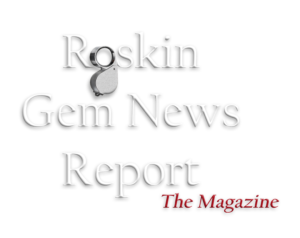The Hyperion image database is a searchable inclusion library, offering nearly 1,800 photomicrographs from the Lotus Gemology laboratory in Bangkok, indexed by gem type, country of origin, natural or synthetic, treatments, and keywords. And it is free for you to use.
Speaking with Billie Hughes, laboratory gemologist, photomicrographer, and co-founder of the lab, the Hyperion project began “in 2014 shortly after we opened the lab. I had just finished my FGA, and I started photographing inclusions as a personal study aid, adding searchable notes to each image’s metadata. When my dad saw what I was doing, he encouraged me to expand on it, with the idea that if it was helpful to me as a young gemologist, it could benefit others as well.”
And yes it does!
Although Hyperion has become one of the most valuable open references for gemologists, it’s worth noting that the searchable database isn’t a full-spectrum catalog of every gem species – yet. At present, the most complete inventories of inclusion images are concentrated in the “big four” colored stones most commonly encountered in the trade: emerald, ruby, sapphire, and spinel.
That focus makes sense – not only are these stones central to the market, but they also offer us an especially rich variety of diagnostic inclusions! (Other gem species do appear in Hyperion, but in smaller numbers.)
Shooting Inclusions – Photomicrographs
Photographing inclusions is hardly new to gemology, but the launch of Lotus Gemology’s Hyperion database in 2019 represented a major step forward: suddenly, hundreds of high-quality inclusion images became not only accessible but most importantly, searchable.
The project that began as a personal reference archive has since evolved into an open online resource. The 1,771 images currently online come paired with explanatory notes. (Read the captions and learn.)

Image by E. Billie Hughes.
Perform A Search
Searching the database takes a minute or two of practice, but Hughes notes the tools are well worth it. Use the drop-down menus or type in a keyword to bring up the images available. Once you have chosen an image to look at more closely, Hughes strongly suggests that captions be read carefully. A search for “spinel,” for example, might bring up inclusions inside spinel–or spinel inclusions inside other gems. And for those wanting a panoramic view of the entire database, simply hitting “search” without specifying anything in the drop down menus or the search box will bring up all 1,771 images currently in the database!

Continually Uploading
The Hyperion database isn’t standing still. New images are added regularly, broadening the scope beyond its corundum and spinel roots. Each photo comes with clear, practical notes–clues that help gemologists spot treatments, weigh origin calls, or simply recognize an inclusion they’ve never seen before.
It’s this mix of sharp imagery, smart captions, and constant updates that makes Hyperion more than an archive. It’s a working tool, one that lets gemologists sharpen their skills, keep up with the market, and see what’s really going on inside the gems we handle every day.
Tap here to visit the Hyperion Database at Lotus Gemology
Tap here to read Brecken Branstrator’s This Database of Gemstone Inclusions Is Now Open to All,
published in National Jeweler Magazine, 2019.













